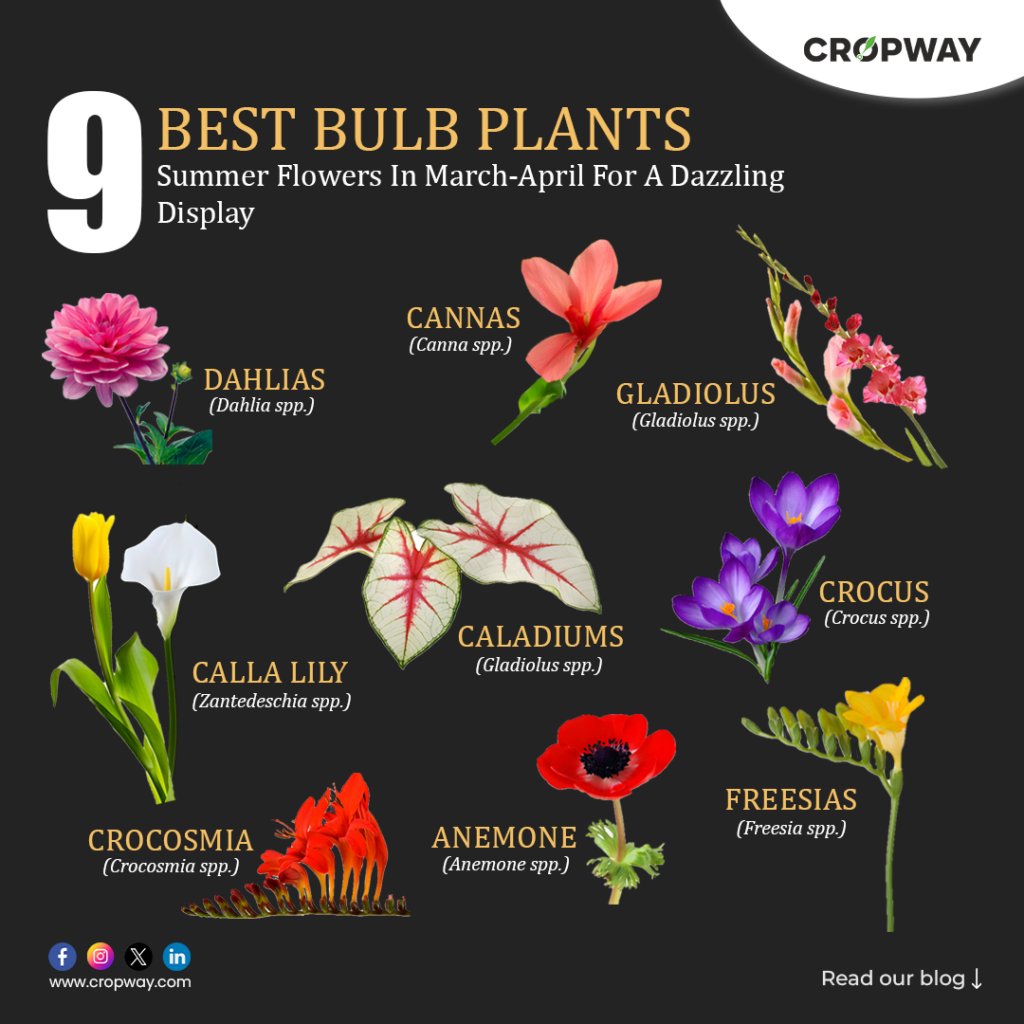
Introduction
It’s already March and as the sun climbs higher in the sky and the temperatures rise. Across different regions of the country flowers of all colours and shapes bloom. Irrespective of whether you are a gardening enthusiast or flower lover, It’s time to transform your garden into a vibrant symphony of colors and textures. One of the best ways to achieve this is by incorporating bulb plants that bloom during the summer months.
Celebrate the start of spring by planting a few bulbs that will give your garden a beautiful extra splash of color. Whether you’re looking for large green foliage or blooming flowers, these bulbs put your spirits in a sunshine daydream. In this blog, we’ll explore these hardy and versatile plants not only add a burst of color but also require minimal maintenance. Bulbs are not only easy to grow but also promise a breathtaking array of hues and textures.
Following are the top 9 unique bulb plants that are sure to make your summer garden shine.
Dahlias (Dahlia spp.)
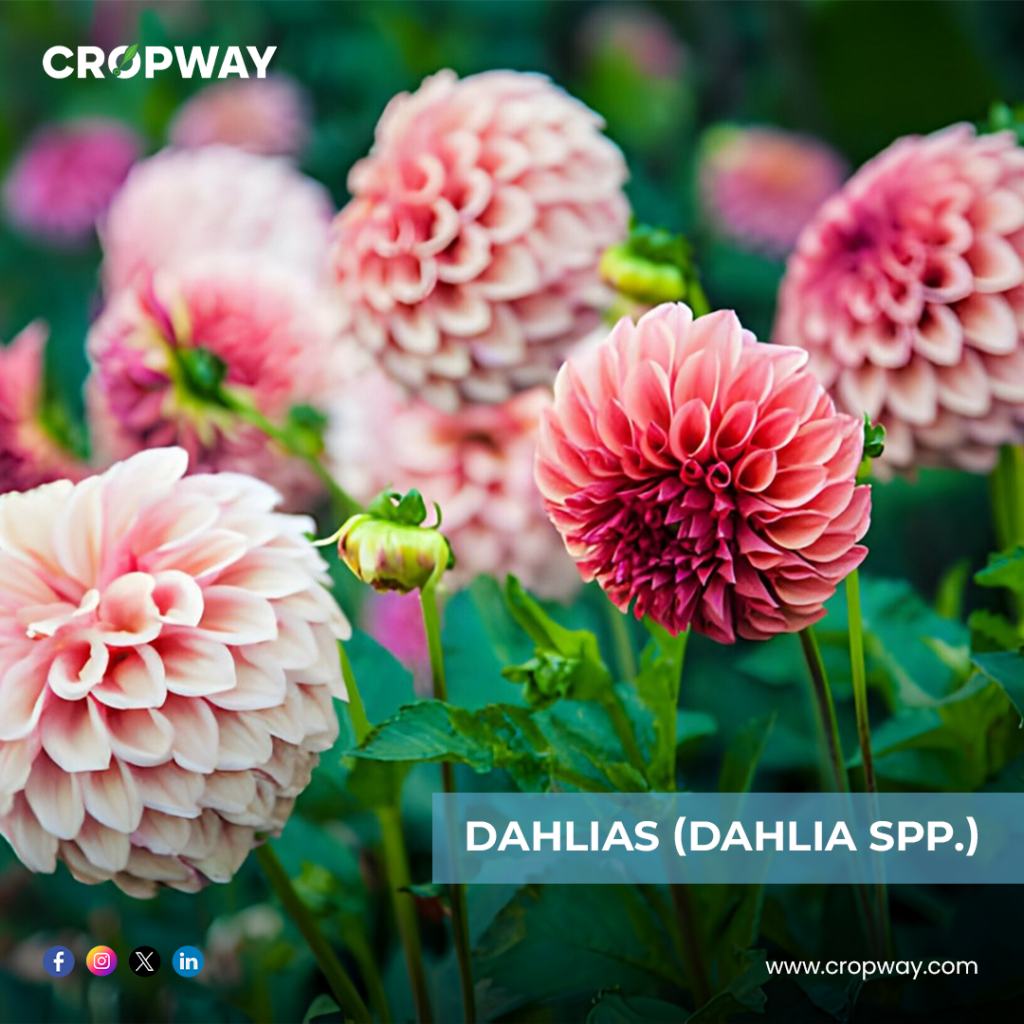
Dahlias, famed for their captivating and varied flower shapes, emerge as true summer-flowering bulbs, requiring planting post-winter. With a plethora of varieties displaying a spectrum of colors and sizes, from 10 to 2 inches in diameter, they offer bold reds to delicate pinks. Flourishing in well-drained soil under full sunlight, Dahlias infuse garden beds with dramatic flair and serve as exquisite cut flowers, elevating vibrant summer bouquets.
Cannas (Canna spp.)
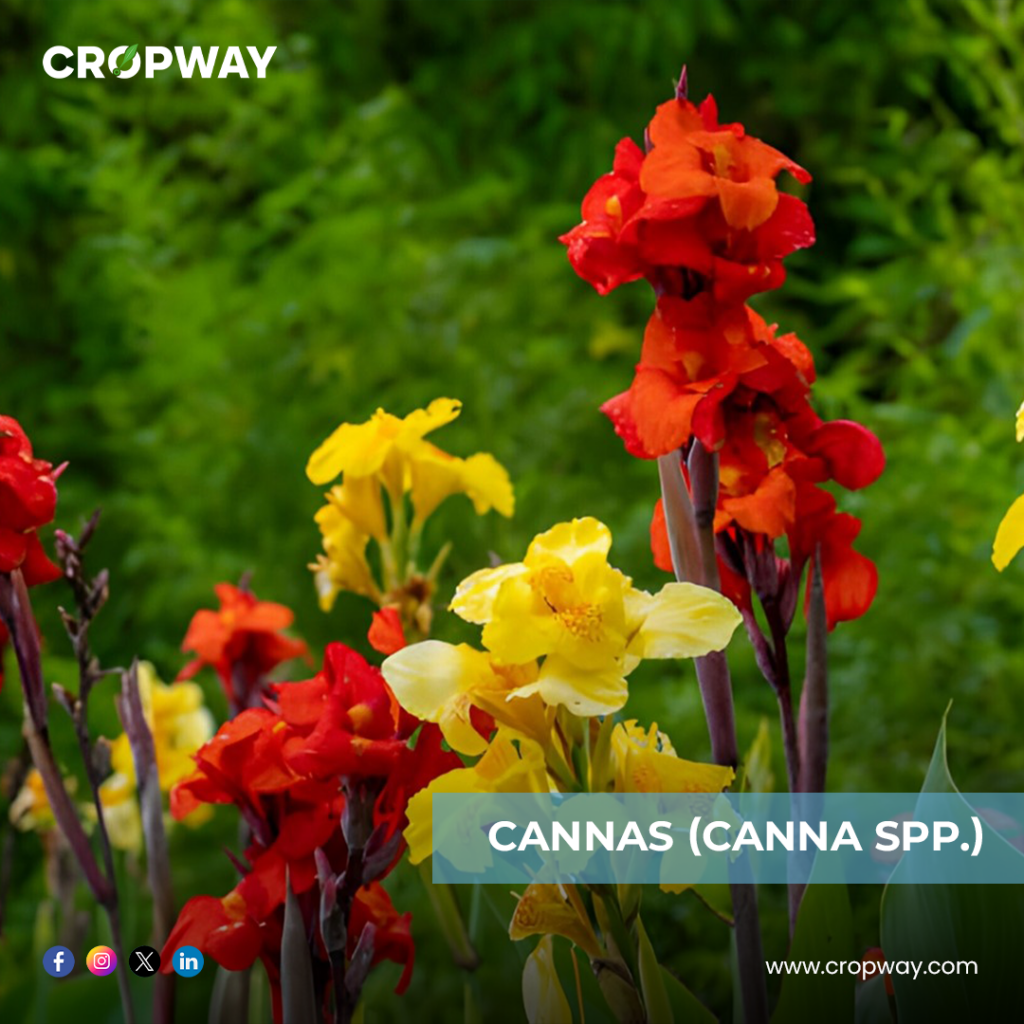
Cannas (Canna spp.) are stunning, easily cultivated tropical and sub-tropical plants boasting vibrant red, pink, yellow, orange, and cream flowers that captivate hummingbirds. Despite their dazzling appearance, Cannas aren’t true bulbs; they sprout from rhizomes, akin to bananas and flowering ginger. With wide, banana-like leaves in green, bronze, or multicolored hues, these low-maintenance beauties thrive in full sun, resilient even in wet soil. While their preference leans towards full sun and warmth, Cannas display versatility by tolerating some shade. Emitting a tropical ambiance, their vivid, exotic colors make them an ideal adornment for midsummer gatherings.
Crocus (Crocus spp.)
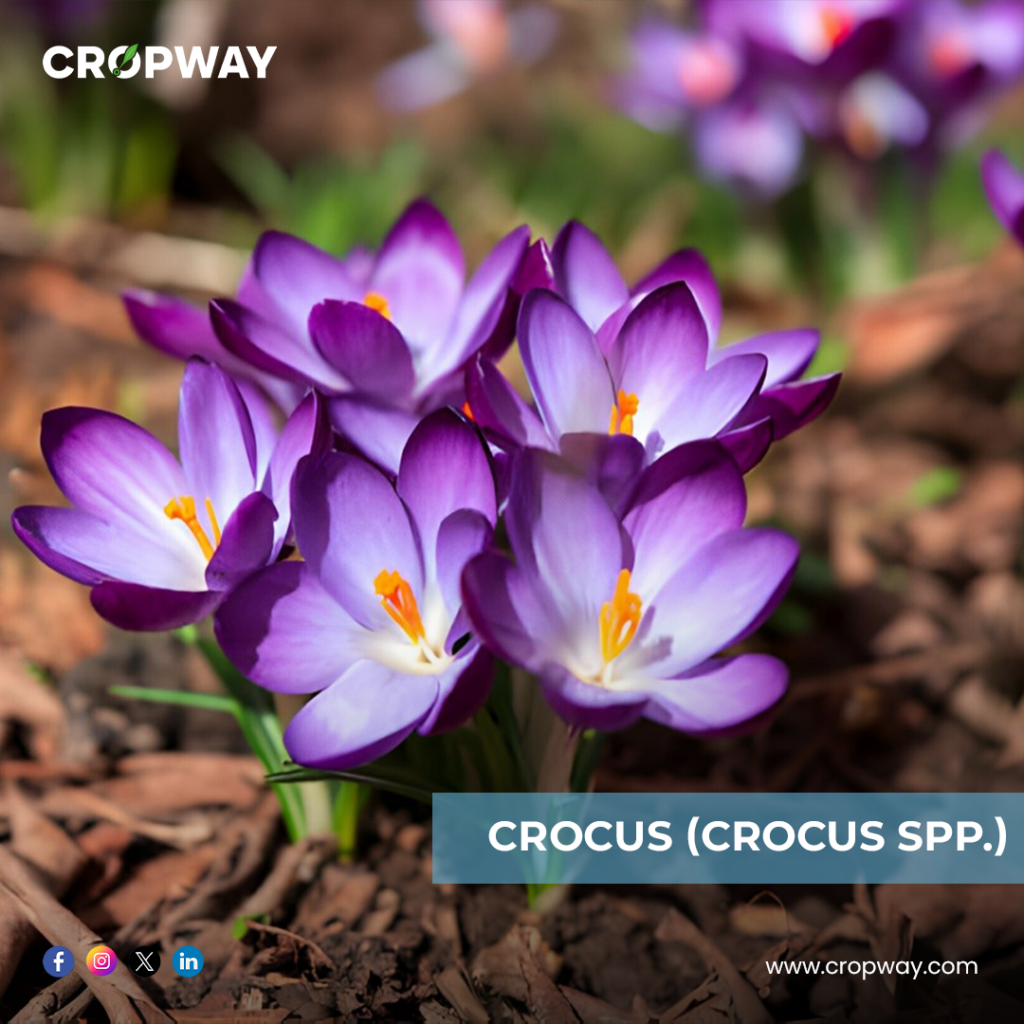
Crocuses, emerging from corms, are resilient, low-growing perennials from the iris family. These enduring flowers return for at least five years from a single corm, offering consistent beauty. Though commonly linked to spring, some varieties surprise with summer blooms, showcasing cup-shaped flowers in diverse colors. Planted in well-drained soil, these petite bulbs bring a charming and unexpected display, marking the arrival of summer. Their persistent nature and vibrant hues make crocuses a delightful addition to the garden, ensuring a visually appealing landscape that endures year after year.
Gladiolus (Gladiolus spp.)
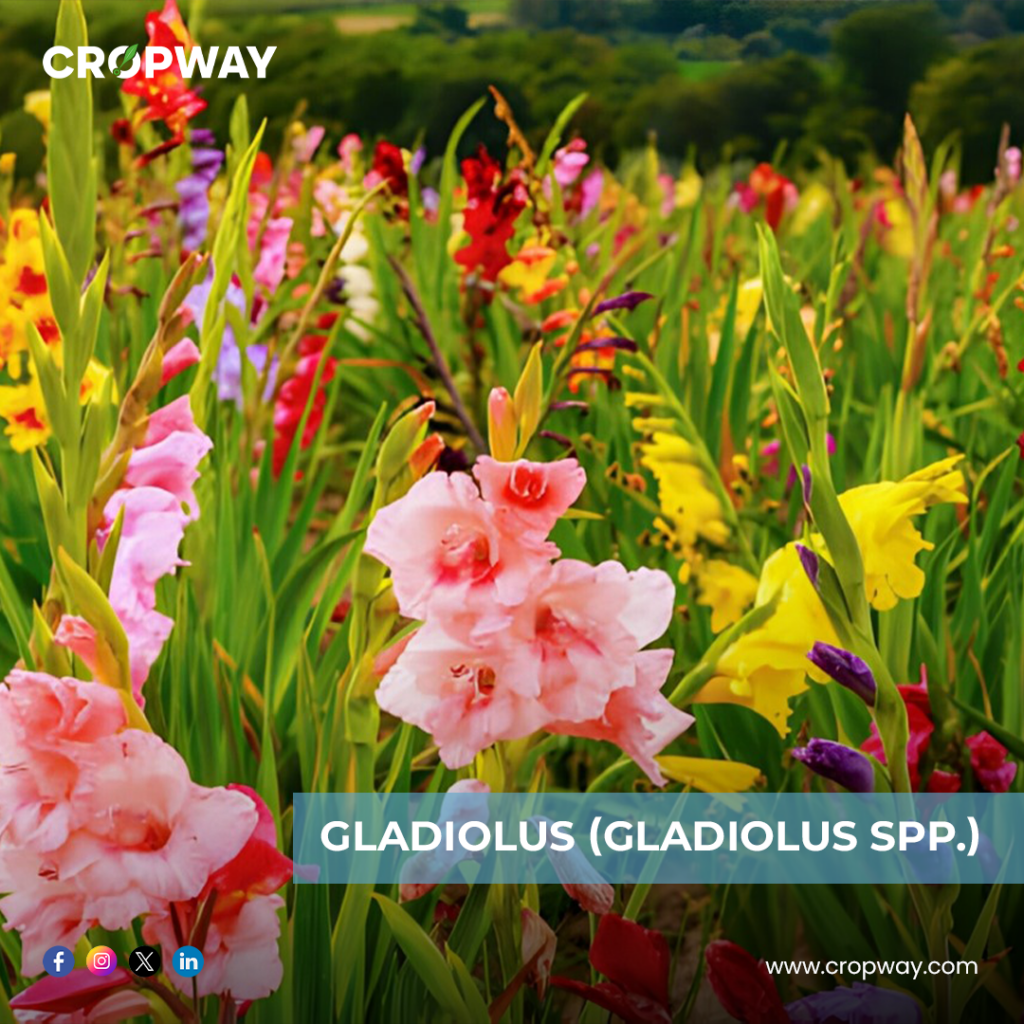
Gladiolus, a timeless summer bulb, graces gardens with its tall spikes of blossoms, making it a seasonal essential. These flower spikes host a parade of trumpet-shaped blossoms, available in an array of colors, lending captivating vertical allure to flower beds. Best suited for well-drained soil, Gladioli repay your efforts with a magnificent showcase of blooms during the mid to late summer period. As a classic choice, these flowers not only bring vibrant colors but also add a touch of elegance and grace to your garden, making them a delightful feature for those warm and sunny months.
Calla Lily (Zantedeschia spp.)
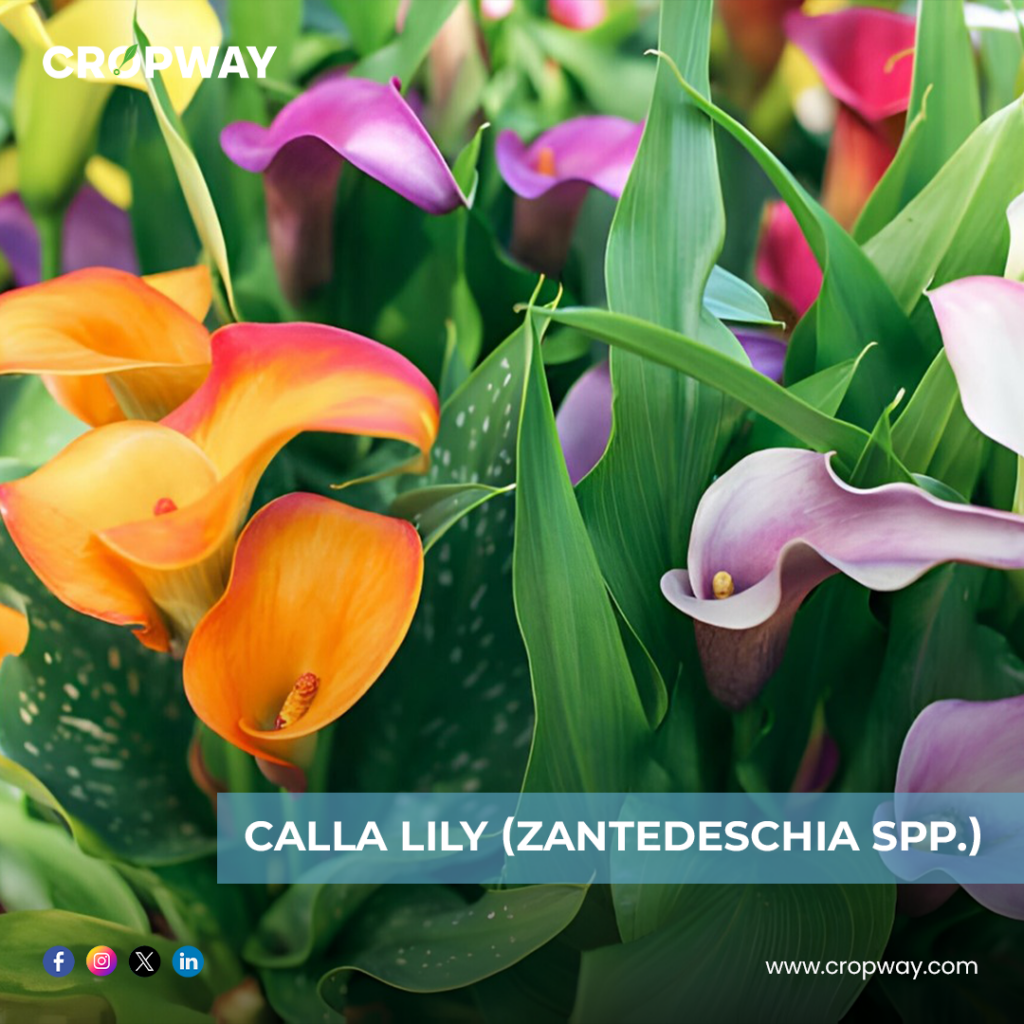
Calla lilies, steeped in symbolism of rebirth and Easter, embody elegance with their sleek, trumpet-shaped flowers, available in a spectrum of colors beyond the traditional pure white. Modern hybrids showcase a diverse palette. Known as spathes, the blooms endure for weeks, providing enduring color to containers, borders, and cut flower arrangements. Adding a touch of sophistication, these exquisite flowers grace garden beds and floral displays. Despite not being true lilies, calla lilies emulate their qualities—sensual, graceful, suggestive, and exotic.
Caladiums (Caladium spp.)
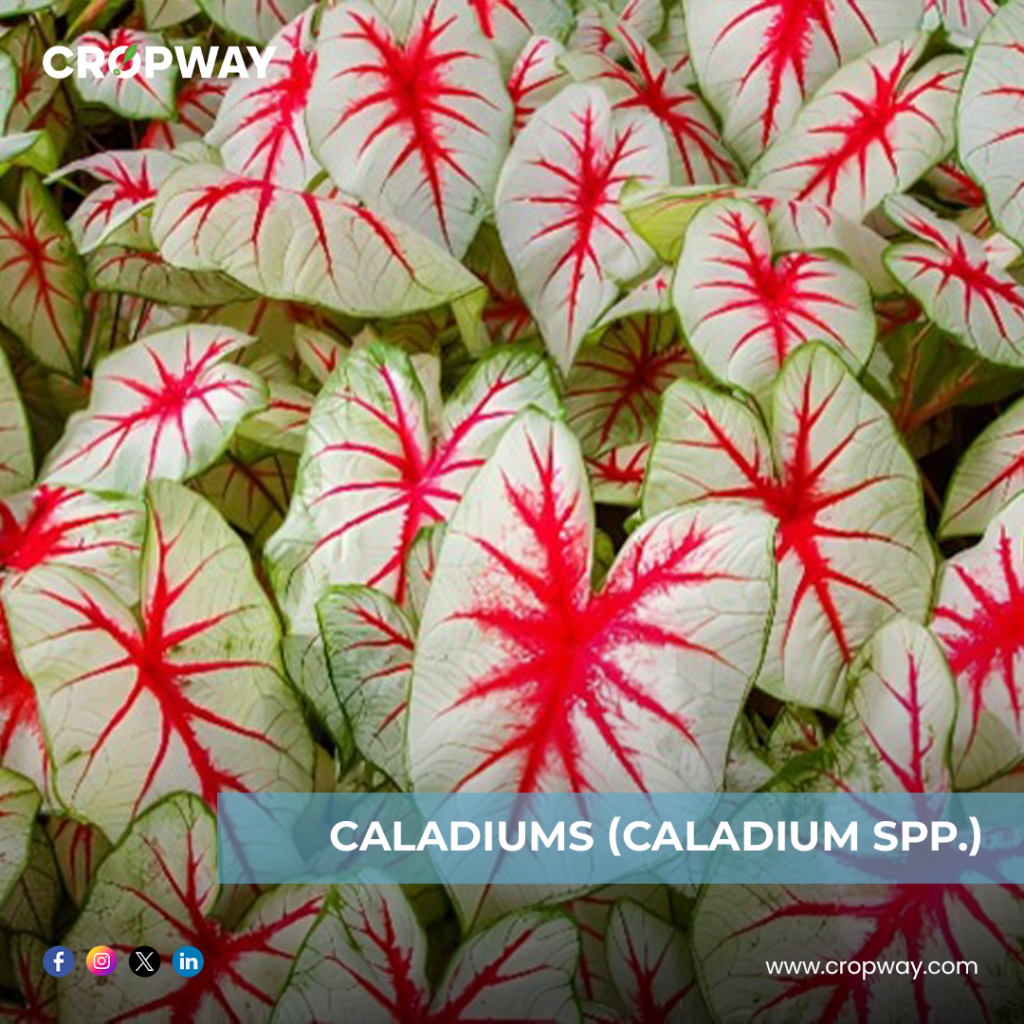
Caladiums stand out as an excellent choice for shade-loving bulbs, offering unparalleled beauty in less illuminated corners. Thriving in the heat, these tropical gems boast heart-shaped foliage in a spectrum of colors, infusing shaded garden areas with a delightful tropical ambiance. Typically cultivated as annuals, except in the warmest climates, caladiums complement other shade-loving plants like ferns, impatiens, or wishbone flowers. Avoiding full sun, as it may cause leaf burn, these bulbs can be overwintered indoors for subsequent spring planting. Plant them in well-draining, moist soil to ensure a striking display of vibrant foliage, transforming shaded spaces into a summer haven.
Crocosmia (Crocosmia spp.)
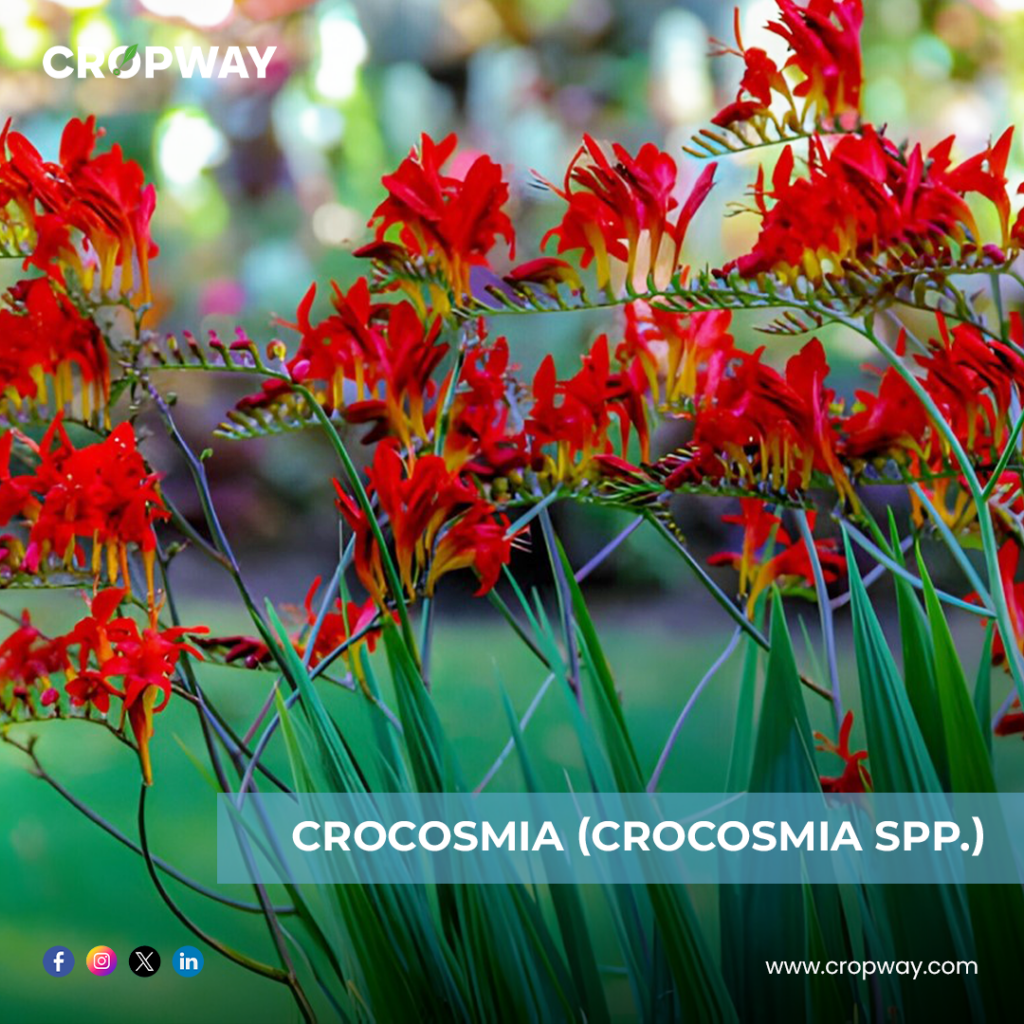
Crocosmia known for their vibrant and fiery blooms, Crocosmia injects summer gardens with a burst of captivating color. Renowned for their robust nature, Crocosmia exhibits greater vigor compared to other bulbs. When the soil is nutrient-rich, the need for summer fertilization diminishes. With a mid-summer flowering start, these bulbs yield arching stems adorned with funnel-shaped blossoms in red, orange, and yellow hues. Optimal for full sunlight, Crocosmia offers a stunning and enduring display throughout the summer, flourishing both in profuse sun and partial shade. Achieving a balance between groupingand preventing overcrowding is key. Perennializing successfully in zones 5 to 9, Crocosmia forms lush clumps, contributing to the garden’s vitality and charm.
Anemone (Anemone spp.)
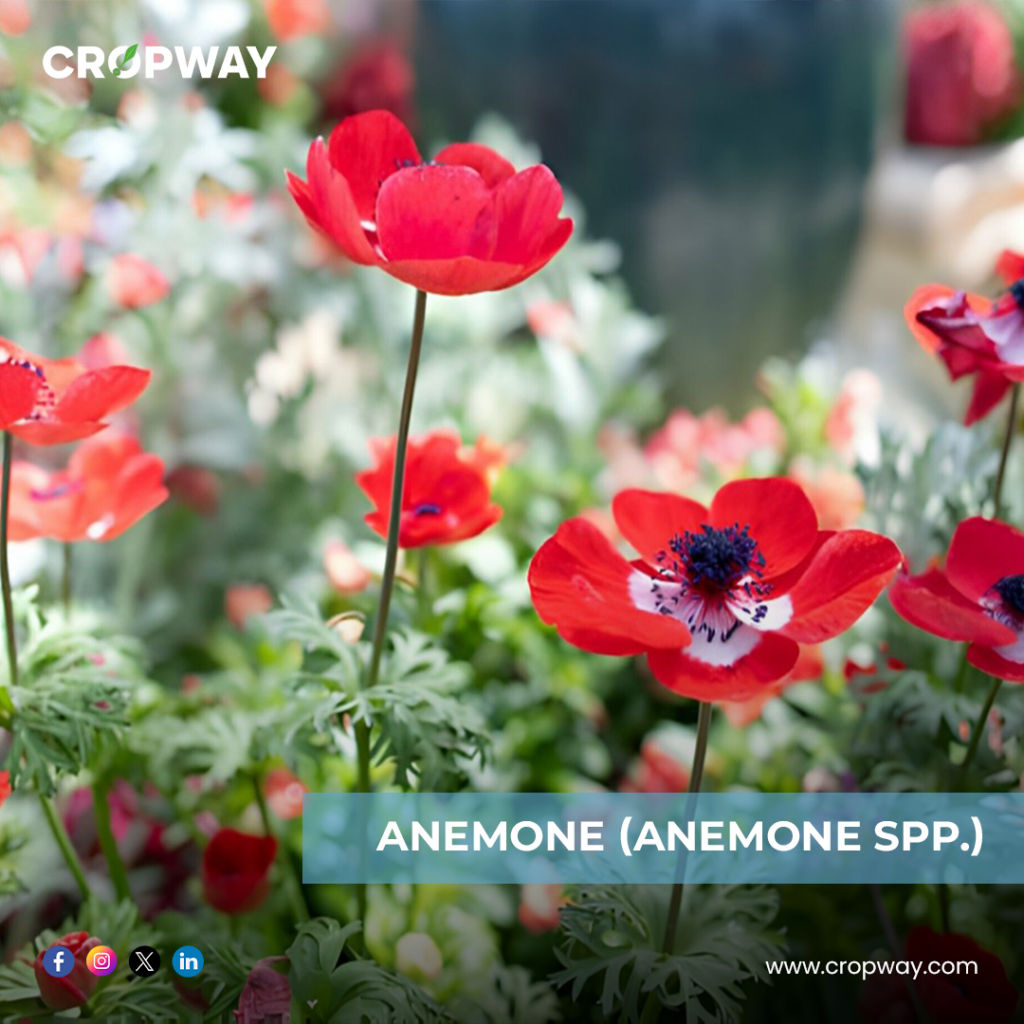
Anemones, often overlooked but truly enchanting, bring grace and delicacy to the summer garden. With their dainty, cup-shaped flowers available in various hues, these bulbs prove excellent for borders, rock gardens, or ground covers. Particularly noteworthy are the windflower anemones or Grecian windflowers (Anemone blanda), emerging from corms and blossoming in early summer. Differing significantly from the Japanese anemones adorning fall gardens, these compact, low-growing varieties add unique charm. For optimal results, plant anemones in March, particularly in zones 3 through 7, allowing corms ample time to bloom by mid-June and unveiling their captivating beauty in full bloom.
Freesias (Freesia spp.)
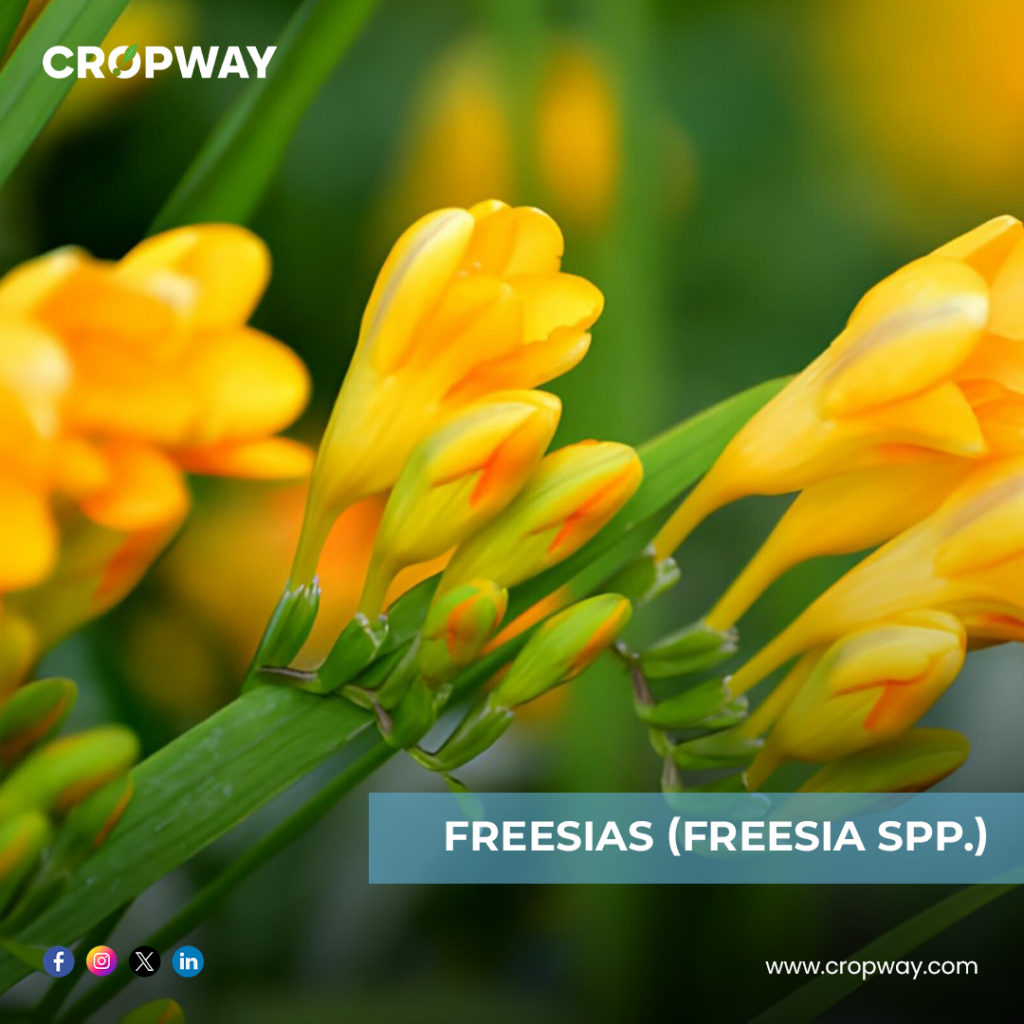
For those seeking fragrant blossoms, Freesias (Freesia spp.) stand out as an exquisite choice. Renowned for their exotic floral trumpets, often gracing wedding bouquets and arrangements, these slender, arching stems produce clusters of tubular flowers with a delightful fragrance. Plant Freesia corms in the fall for optimal growth in hardiness zones 9 or 10, where they swiftly flourish in spring. With narrow, grass-like foliage, healthy plants yield five to seven tubular flowers per stem, aligned like fingers, creating a visually striking effect. Grouped in clusters of five to seven, Freesias bloom approximately 12 weeks after corm planting, adding charm and fragrance to your garden or floral arrangements.
Conclusion
Transform your summer garden into a vibrant paradise with these 9 bulb plants. From the bold and dramatic Dahlias to the elegant and fragrant Lilies ,Freesias, each variety brings its unique charm, ensuring a colorful and captivating display. Whether you have a small balcony or a spacious backyard, these bulbs are sure to add a touch of magic to your outdoor space. Experiment with different combinations to create a personalized symphony of colors, and watch as your garden comes alive with the radiant beauty of bulb blooms all summer long. Happy gardening!







